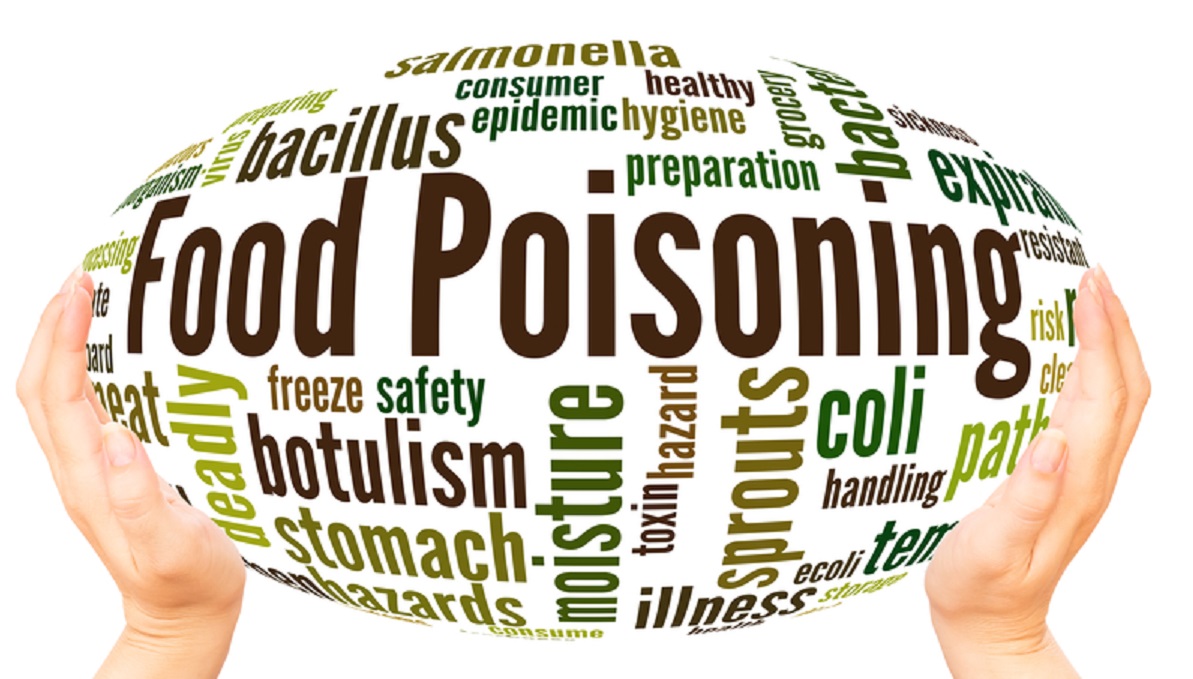Summer brings sunshine, longer days, and the irresistible smell of food sizzling on the grill. But while you’re enjoying burgers and corn on the cob, dangerous bacteria could be lurking in your picnic basket. Foodborne illnesses spike during warmer months, and the reason is simple: bacteria thrive in heat, and outdoor food preparation makes food safety more challenging.
With expert insight from Dr. Rebecca McIlroy, DO, we’ll explore how to prevent food poisoning this summer—from proper cooking temperatures to safe storage practices.

Why Food Poisoning Increases During Summer
According to the United States Department of Agriculture (USDA), foodborne illness cases surge in the summer due to two major factors:
1. Heat Boosts Bacterial Growth
Warm temperatures create the perfect environment for bacteria to multiply—sometimes doubling in number every 20 minutes. This accelerates spoilage and increases the risk of contamination, especially in perishable items like meats, dairy, and eggs.
2. Outdoor Cooking Presents Unique Challenges
Barbecues and cookouts often lack access to clean water, refrigeration, or sanitized surfaces, making it harder to follow safe food handling practices. This opens the door for cross-contamination and improper cooking temperatures.
What Causes Food Poisoning?
Food poisoning occurs when you consume food contaminated with harmful bacteria, viruses, parasites, or the toxins they produce. These contaminants can be introduced at any point—from factory processing and packaging to your home grill.
Common Contaminants Behind Foodborne Illnesses:
-
Salmonella – Found in raw poultry, eggs, and produce.
-
E. coli – Linked to undercooked ground beef and unwashed vegetables.
-
Listeria – Affects deli meats and unpasteurized cheeses.
-
Norovirus – Often spread via contaminated surfaces or food handlers.
“Contamination can occur in the factory or in your backyard,” Dr. McIlroy explains. “That’s why personal food handling habits are crucial in preventing illness.”
Safe Food Handling Tips for Outdoor Cooking
Practicing good hygiene and proper food handling drastically reduces the risk of food poisoning. Dr. McIlroy emphasizes consistency and attention to detail—especially when dealing with raw meat and seafood.
Essential Safety Tips for Cookouts:
-
Wash hands, utensils, and surfaces before and after contact with raw food.
-
Use separate cutting boards for raw meat and ready-to-eat items.
-
Discard marinades or sauces that have touched raw meat.
-
Always use a clean plate for cooked items—never reuse the one used for raw meat.
Cook to the Right Temperature: Use a Food Thermometer
One of the most common causes of foodborne illness is undercooked meat. Visually checking if meat is “done” isn’t enough—use a food thermometer to ensure it’s safe to eat.
Safe Internal Temperatures for Common Foods:
-
Ground beef: 160°F
-
Chicken & turkey: 165°F
-
Pork & lamb: 145°F (with 3-minute rest)
-
Fish: 145°F
Also, avoid thawing meat at room temperature. Instead, defrost in the refrigerator or use the microwave’s defrost function if you’re short on time.
Keep It Cool: Proper Storage & Refrigeration
Bacteria multiply rapidly at temperatures between 40°F and 140°F, also known as the “danger zone.” If perishable foods sit in the heat for too long, they can quickly become unsafe to eat.
Key Storage Guidelines:
-
Refrigerate or freeze leftovers within 1 hour if the outdoor temperature is over 90°F.
-
Use coolers with ice packs to keep drinks and dairy cold during picnics.
-
Store meats separately to avoid dripping onto other items.
Signs and Symptoms of Food Poisoning
Symptoms typically appear within a few hours to a few days after eating contaminated food. Some cases may be mild and resolve on their own, while others may require medical attention.
Common Symptoms:
-
Nausea and vomiting
-
Diarrhea
-
Abdominal pain and cramps
-
Fever
-
Fatigue or dizziness
Infections caused by parasites can take days or weeks to show symptoms, which makes pinpointing the contaminated food more difficult.
What to Do if You Get Sick
Most cases of food poisoning resolve without antibiotics. The focus should be on staying hydrated and resting while the body flushes out the infection.
Dr. McIlroy recommends:
-
Sip water, electrolyte drinks, or clear sodas every 30 to 60 minutes.
-
Avoid anti-diarrheal medications, as they may trap harmful bacteria in the gut.
-
Return to solid foods slowly, starting with bland, easy-to-digest options like toast, rice, and bananas.
When to Seek Medical Attention
Sometimes, food poisoning becomes serious enough to require professional care. Seek immediate medical help if you experience any of the following:
Call a Doctor If:
-
You can’t keep fluids down or show signs of dehydration (dry mouth, little urination, dizziness).
-
Diarrhea lasts longer than 3 days.
-
You notice blood in stool or vomit.
-
You experience severe abdominal pain or neurological symptoms like tingling, confusion, or blurry vision.
Frequently Asked Questions:
Q1: How long can food sit out in the heat before it becomes unsafe?
A: Perishable foods should not sit out for more than one hour if the temperature is above 90°F. Otherwise, refrigerate within two hours.
Q2: Can I reuse marinade that touched raw meat?
A: No. Once a marinade contacts raw meat, it can carry harmful bacteria. Discard it or boil it for several minutes before reuse.
Q3: What should I do if I suspect food poisoning?
A: Stay hydrated, rest, and avoid anti-diarrheal medications unless prescribed. See a doctor if symptoms worsen or dehydration occurs.
Q4: What temperature should chicken be cooked to?
A: Chicken should always be cooked to an internal temperature of 165°F to kill harmful bacteria like Salmonella.
Q5: Why is food poisoning more common in summer?
A: Warmer temperatures speed up bacterial growth, and outdoor cooking often lacks proper sanitation, increasing the risk of contamination.




